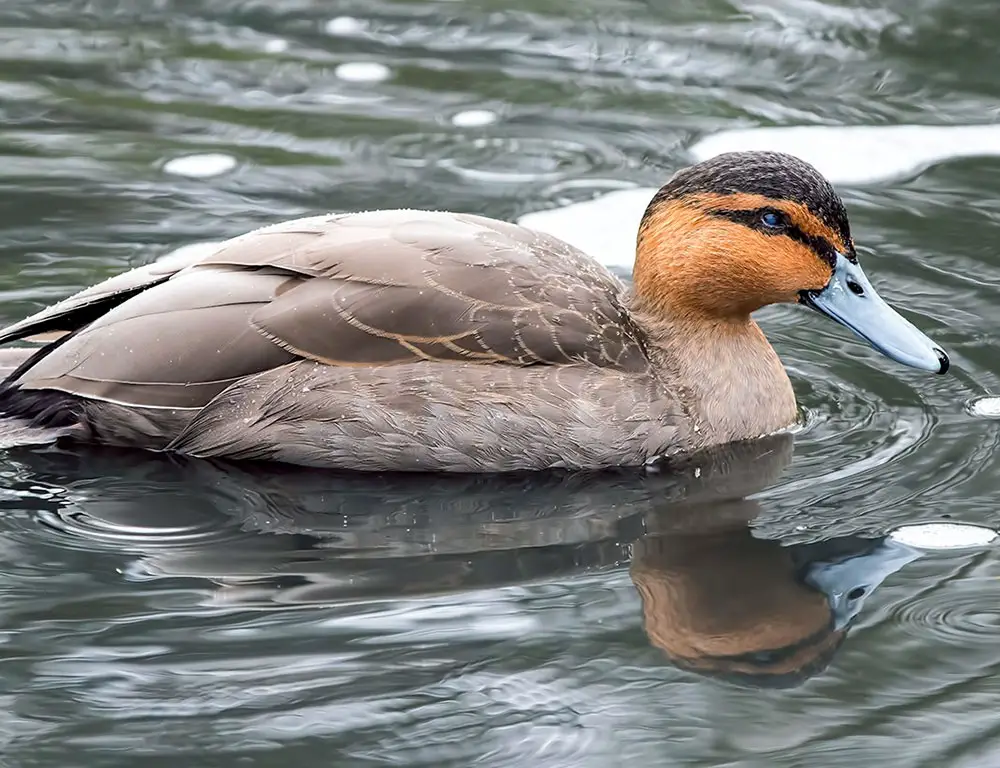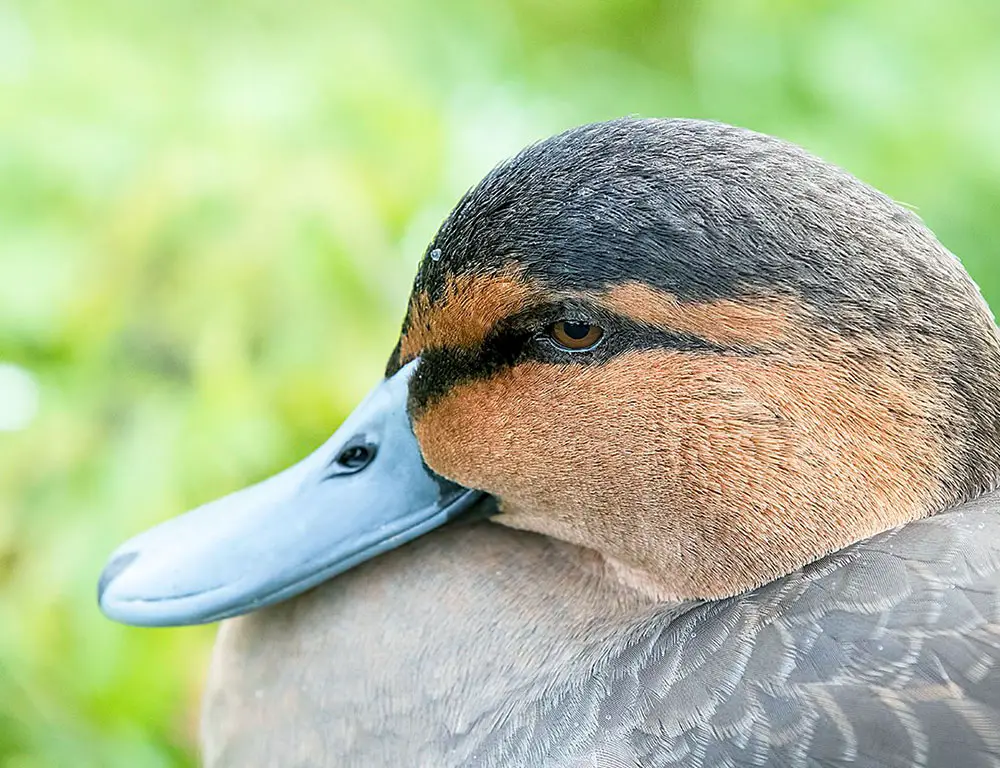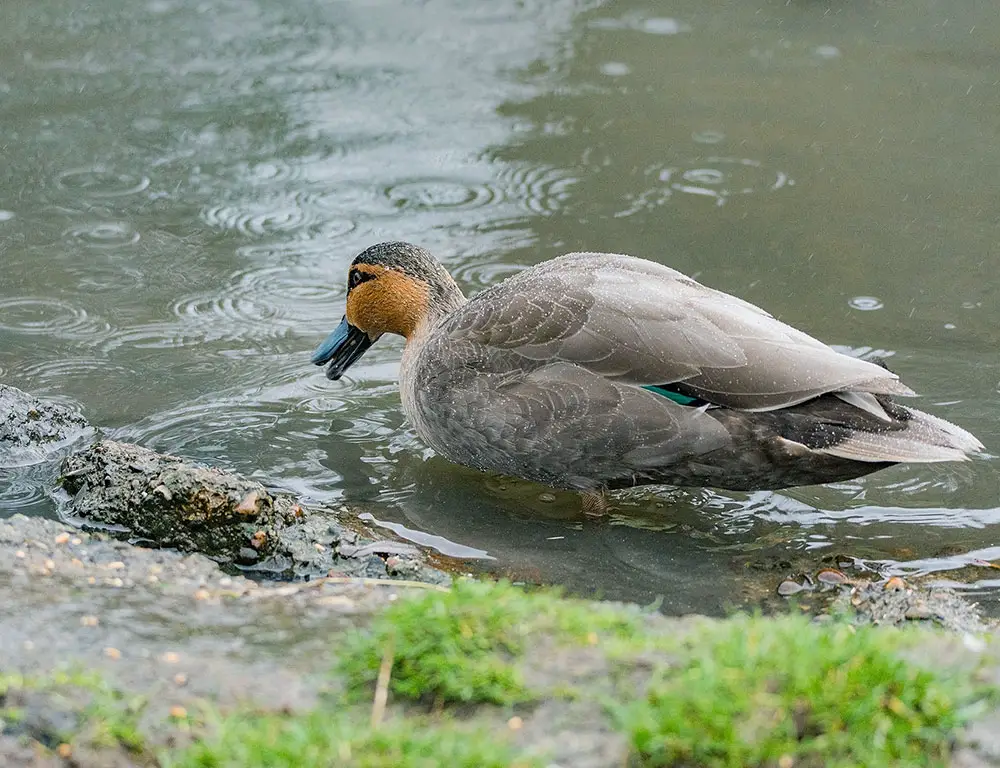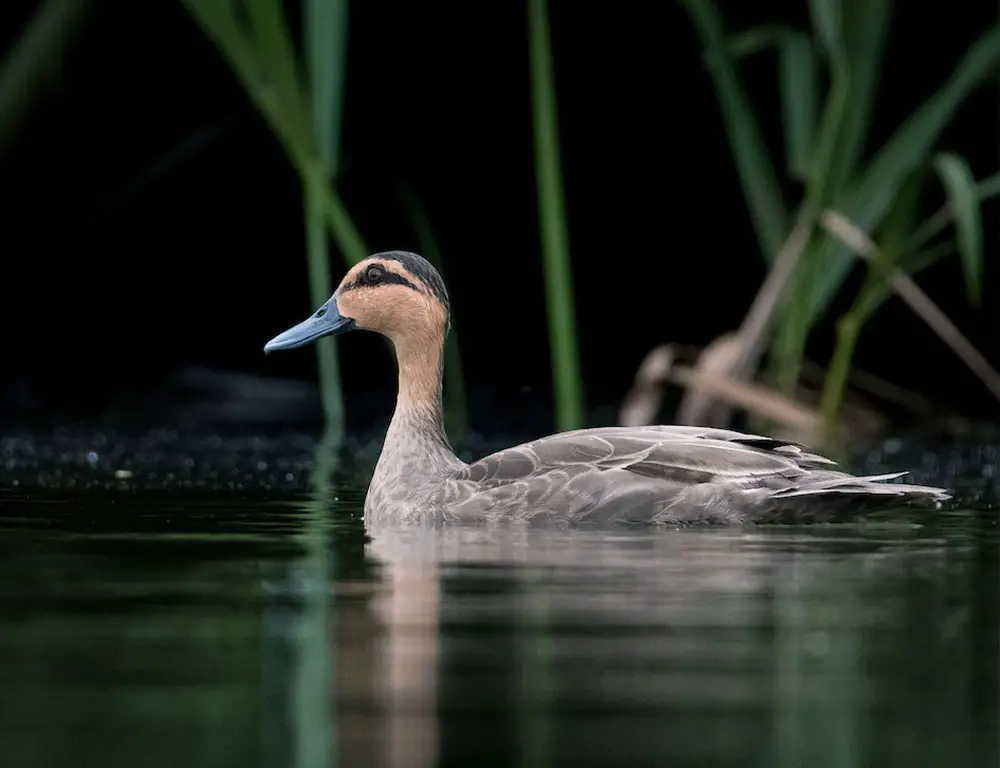The Philippine Duck, scientifically known as Anas luzonica, is a captivating symbol of the Philippines’ rich biodiversity. Endemic to this archipelago, it is uniquely positioned in local pride and the global ecosystem.
Sporting brown plumage and a distinctive blue-grey bill, this species charms with its subtle beauty and surprises with its adaptability.
Despite its slightly more diminutive stature than the well-known mallard, the Philippine Duck thrives in diverse habitats, from freshwater lakes to coastal lagoons.
However, it faces habitat loss and hunting threats like many unique species. In this article, we’ll explore the importance of conservation efforts in safeguarding the future of this fascinating bird.

Physical Characteristics of the Philippine Duck
The Philippine Duck (Anas luzonica) possesses several distinct physical characteristics that contribute to its unique appearance and environmental adaptation.
Here’s a detailed overview of its physical traits:
Size
Philippine Ducks are medium-sized waterfowl, with adults typically measuring between 48 to 58 centimeters (19 to 23 inches) in length. They exhibit sexual dimorphism, with males slightly larger and heavier than females.
Plumage
The plumage of the Philippine Duck is predominantly brown with darker streaks or mottling, providing effective camouflage in its wetland habitats.
The coloring may vary slightly between individuals, but overall, they have a cryptic appearance that helps them blend into their surroundings.
Head and Neck
The head and neck of the Philippine Duck are often darker in color compared to the rest of its body, with shades of brown or olive. Males may display more vibrant iridescence or greenish-black coloring on their heads during the breeding season.
Bill

One of the most distinctive features of the Philippine Duck is its bluish-gray bill, which contrasts sharply with its overall plumage. The bill is broad and slightly upturned, allowing for efficient foraging and feeding on aquatic vegetation and invertebrates.
Wings
During flight, the wings of the Philippine Duck display a contrasting pattern of dark and light colors. The primary feathers are typically dark, while the speculum (the colored patch on the wings) may appear iridescent green or blue, adding to the bird’s visual appeal.
Legs and Feet
Philippine Ducks have relatively long legs and webbed feet adapted for swimming and walking on soft substrates. The feet are equipped with lobed toes that provide additional propulsion in water and stability on land.
Sexual Dimorphism
While males and females of the species share similar plumage patterns, males often exhibit more pronounced coloration on their heads and necks, particularly during the breeding season. Females may appear slightly duller in coloration year-round.
Juveniles
Juvenile Philippine Ducks typically resemble adult females but may exhibit less distinct plumage patterns and coloring. They gradually develop adult ducks’ characteristic features and coloration as they mature.
Habitat and Distribution of the Philippine Duck

The Philippine Duck (Anas luzonica) is indigenous to the tropical environment of the Philippines and thrives in various habitats across the region.
Here’s a detailed overview of its habitat and distribution:
Natural Habitat
The Philippine Duck’s natural habitat encompasses various wetland environments found throughout the Philippines. Here’s a closer look at its natural habitat:
- Freshwater Lakes and Ponds: Philippine Ducks frequent freshwater lakes and ponds, where they can find ample food resources such as aquatic plants, small fish, and invertebrates. These habitats also offer suitable nesting sites among the reeds and vegetation along the shoreline.
- Marshes and Swamps: Marshes and swamps provide essential habitat for Philippine Ducks, offering shelter, nesting areas, and abundant food sources. These wetland habitats are rich in aquatic vegetation and support a diverse array of invertebrates, which form a significant part of the ducks’ diet.
- Rice Fields: Agricultural areas, particularly rice fields, are another habitat where Philippine Ducks can be found. Rice fields provide opportunities for foraging on grains, seeds, and insects, especially during the planting and harvesting seasons. The flooded fields also mimic natural wetland habitats favored by the ducks.
- Coastal Lagoons and Tidal Creeks: Near coastal areas, Philippine Ducks may inhabit lagoons, estuaries, and tidal creeks. These habitats offer a mix of freshwater and saltwater environments, providing additional feeding opportunities and nesting sites for the ducks.
- Rivers and Streams: Philippine Ducks may also be found along rivers and streams, especially where wetland habitats intersect with flowing water bodies. These habitats offer access to freshwater resources and provide corridors for movement between wetland areas.
Geographic Range
The geographic range of the Philippine Duck is primarily confined to the Philippines, where it is endemic, meaning it is found nowhere else in the world.
Here’s a breakdown of its geographic distribution within the Philippine archipelago:
- Luzon: Luzon, the largest island in the Philippines, serves as a stronghold for the Philippine Duck. It is particularly prevalent in wetland habitats such as the Candaba Swamp and Subic Bay. These areas provide abundant food sources and suitable nesting grounds for the ducks.
- Visayas: While sightings of Philippine Ducks in the Visayas region are less common compared to Luzon, they have been observed on islands such as Negros. The presence of wetland habitats on these islands provides opportunities for the ducks to forage and breed.
- Mindanao: Philippine Ducks were historically widespread in Mindanao, the second-largest island in the Philippines. However, their sightings have become increasingly rare over time.
Some populations persist in marshes like Ligawasan, but their numbers have declined significantly due to habitat loss and other threats.
Conservation Status of the Philippine Duck

The Philippine Duck (Anas luzonica) faces significant threats to its survival, leading to its classification as “Vulnerable” by BirdLife International. This designation underscores the high risk of extinction in the wild if immediate conservation measures are not implemented.
Population Decline
Over the past few decades, the population of Philippine Ducks has plummeted dramatically. Estimates from the 1960s indicated a population range of 10,000 to 100,000 individuals.
However, recent assessments suggest a sharp decline, with only 5,000 to 10,000 individuals remaining. This alarming reduction underscores the urgent need for conservation efforts.
Habitat Loss
The primary threat to Philippine Ducks is habitat loss, primarily due to the conversion of wetlands for fish ponds and other agricultural purposes.
Wetlands serve as vital breeding areas for these ducks, and their destruction significantly impacts the species’ ability to survive and reproduce.
Illegal Hunting
Despite legal protections in place, Philippine Ducks are still hunted illegally for consumption and trade. This unsustainable hunting pressure further exacerbates population declines and threatens the species’ long-term survival.
International Presence
While Philippine Ducks are native to the Philippines, sightings have been reported in other countries such as Japan and Guam. However, these small populations outside their native range are insufficient to offset declines observed within the Philippines.
Conservation Measures
Urgent action is needed to protect Philippine Ducks from further decline. Conservation efforts should focus on:
- Habitat Protection: Establishing and expanding protected areas to safeguard crucial wetland habitats essential for the Philippine Duck’s survival.
- Law Enforcement: Strengthening enforcement of existing laws and regulations to combat illegal hunting and poaching of Philippine Ducks.
- Community Engagement: Involving local communities in conservation initiatives, raising awareness about the importance of protecting Philippine Ducks, and promoting sustainable practices.
- Research and Monitoring: Researching better to understand the ecology and population dynamics of Philippine Ducks and monitoring population trends to inform conservation strategies.
Conclusion
The Philippine Duck is a remarkable symbol of biodiversity and cultural heritage in the Philippines. Its unique features, including distinctive plumage and dietary habits, underscore its importance in maintaining ecosystem balance.
However, the species faces significant threats from habitat loss and hunting, leading to a drastic decline in population numbers.
Urgent conservation efforts, public education, and government enforcement are imperative to ensure its survival.
With population estimates dwindling alarmingly, immediate action is crucial to preserve this vital component of our world’s biodiversity.
Understanding and protecting the Philippine Duck is about appreciating its beauty and acknowledging its indispensable role in our environment. We can make a meaningful difference in securing its continued existence through concerted efforts.